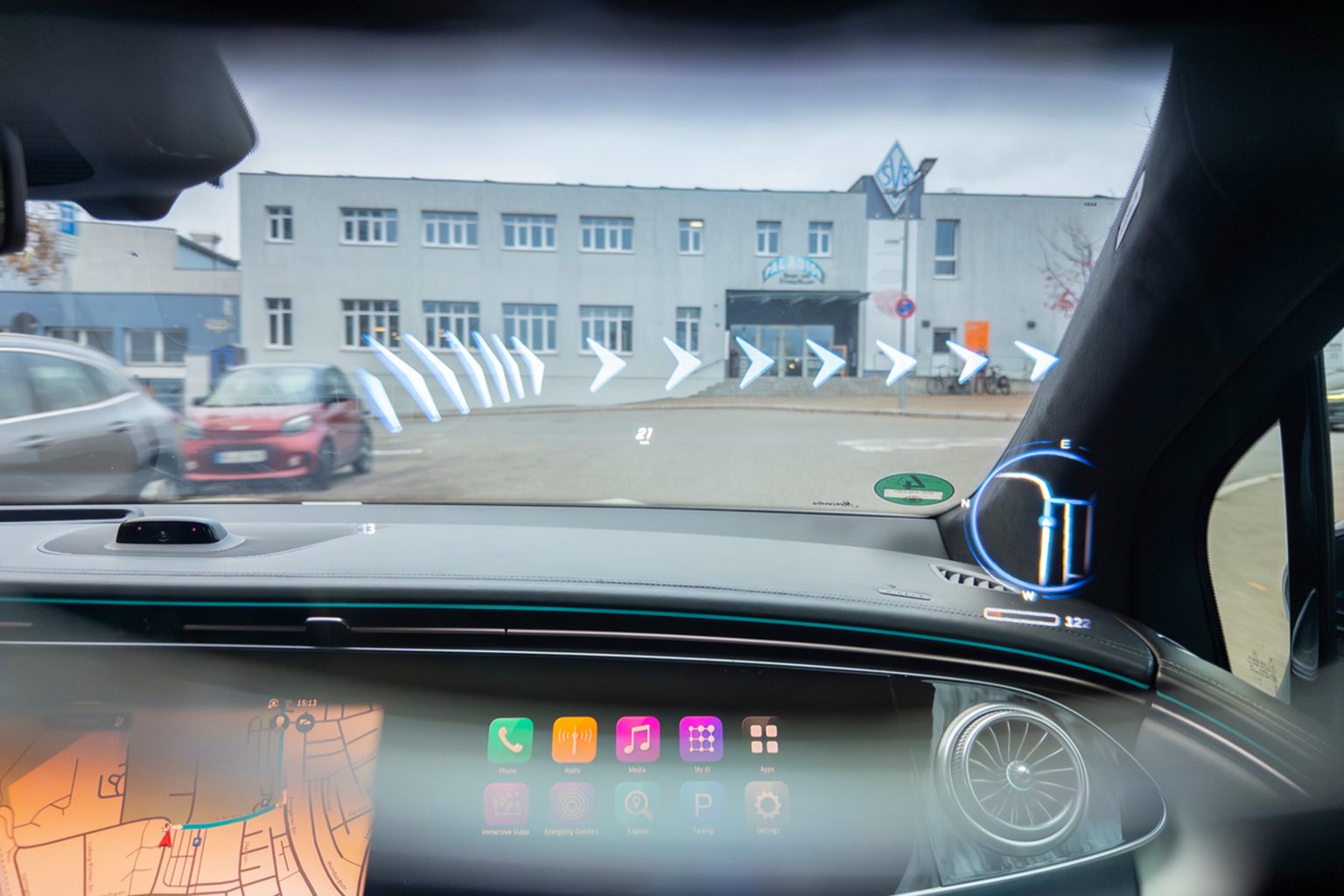The automotive landscape is undergoing a transformation, driven by the integration of augmented reality (AR) technology, which overlays digital information onto the driver’s real-world view. Unlike virtual reality, which creates fully immersive digital environments, AR enhances the existing visual field, offering a more seamless blend of the physical and digital worlds. Major automakers like Audi, Mercedes-Benz, and BMW are at the forefront of this evolution, implementing AR in various forms, from enhanced navigation displays on infotainment screens to advanced head-up displays (HUDs) projected onto the windshield. These systems aim to provide drivers with crucial information without requiring them to divert their gaze from the road, thereby enhancing safety and driving experience.
The evolution of AR HUDs is particularly noteworthy. Early iterations, as seen in the first-generation Audi E-Tron (now Q8 E-Tron) and Mercedes C-Class, overlaid simple arrow graphics onto camera views of intersections to guide navigation. However, newer systems, such as the one in the Audi Q6 E-Tron, project a much larger display onto the windshield, encompassing a broader range of information and incorporating dynamic animations, like real-time speed limit changes, instead of static numerical updates. Audi emphasizes the ergonomic design of its AR HUD, which, with its tilted projection plane and large virtual image distance, aligns with the natural focus of the human eye, minimizing the need for refocusing between the real world and the displayed information. This design is particularly beneficial for drivers who wear corrective lenses. Beyond driving information, Audi also envisions using its AR HUD for entertainment purposes, such as playing games while the vehicle charges.
BMW is also pushing the boundaries of in-car AR with its Panoramic Vision system, set to debut in production vehicles at CES 2025. This system extends the display across the entire width of the windscreen, offering a personalized and immersive experience for both drivers and passengers. Drivers can customize the information displayed in their field of view, while passengers can enjoy different content simultaneously. BMW believes this innovative approach will revolutionize vehicle interior design and enhance the overall driving experience by creating a more spacious and informative cockpit environment.
Mercedes-Benz, another leader in automotive AR, introduced its AR HUD in the S-Class sedan, featuring a 77-inch virtual display and eye-tracking technology to maintain optimal icon placement within the driver’s line of sight. This technology is now available across the S-Class, Maybach S-Class, and EQS models. Mercedes emphasizes the safety benefits of AR HUDs, as they minimize distractions by presenting critical information directly in the driver’s field of view. Beyond in-car integrations, Mercedes is exploring the use of AR glasses, adopting a “Bring Your Own Device” approach to allow customers to integrate their preferred hardware. This approach aims to personalize the AR experience and leverage existing user ecosystems.
Looking ahead, both Mercedes and Audi are actively researching the potential of mixed and augmented reality glasses. Mercedes envisions using AR glasses for both passenger entertainment (4D cinema, wellness applications) and driver-related functions (navigation, assistance systems). The company aims to extend its infotainment system capabilities through these wearable devices, enhancing the overall user experience. Similarly, Audi’s Activesphere concept car showcased mixed reality headsets for both driver and passenger, allowing interaction with virtual content through gestures. While acknowledging the potential of AR glasses, Audi currently favors the AR HUD as the optimal solution for drivers, offering a balance of information delivery and driving safety.
The integration of AR and mixed reality in automobiles represents a significant paradigm shift in how drivers and passengers interact with their vehicles and the surrounding environment. These technologies hold the promise of enhancing safety, improving navigation, and creating more engaging and personalized in-car experiences. As AR technology continues to evolve, we can expect even more innovative applications and functionalities to emerge, further blurring the lines between the real and digital worlds within the automotive domain. The future of driving is becoming increasingly augmented, offering a glimpse into a more connected, informative, and interactive driving experience. The key focus remains on seamlessly blending these technologies into the driving experience, prioritizing safety and minimizing distractions while maximizing the potential of augmented reality to enrich every journey.

